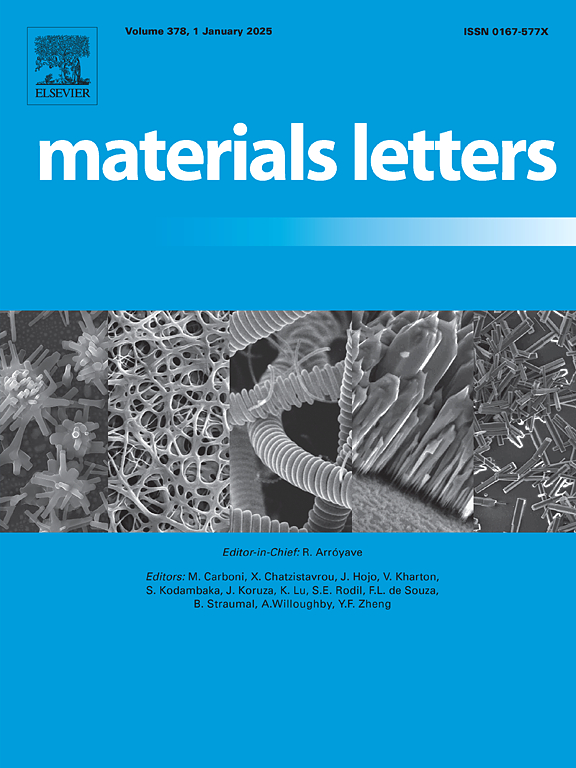混合碳化系统通过粒度和空间分布来提高再生骨料的性能
IF 2.7
4区 材料科学
Q3 MATERIALS SCIENCE, MULTIDISCIPLINARY
引用次数: 0
摘要
再生骨料(RA)对可持续建筑至关重要,但其机械性能较差。本研究通过将三种尺寸范围(0.6-5.0 mm, 5.0-16.0 mm, 16.0-31.5 mm)的RA暴露于20% CO2单向流中来研究碳化处理。较小的颗粒迅速吸收二氧化碳(3小时内99.6%),但随着时间的推移而下降,而较大的颗粒吸收较慢,但仍维持碳化作用,在7天内质量增加329%。上游部分快速捕获二氧化碳,而下游部分利用剩余的二氧化碳进行长时间的碳化。强度在CO2入口附近最高(+ 19%),下游由于CaCO3形成减少而降低。所有混合料均表现为脆性破坏,延性一致(0.9 ~ 1.3 mm)。混合RA系统——上游小颗粒,下游大颗粒——可以改善长期的二氧化碳封存和机械性能,支持低碳混凝土的应用。本文章由计算机程序翻译,如有差异,请以英文原文为准。
A hybrid carbonation system for enhancing recycled aggregate performance through particle size and spatial distribution
Recycled aggregates (RA) are vital for sustainable construction but have poor mechanical properties. This study investigates carbonation treatment by exposing RA of three size ranges (0.6–5.0 mm, 5.0–16.0 mm, 16.0–31.5 mm) to a 20 % CO2 unidirectional flow. Smaller particles rapidly absorb CO2 (99.6 % in 3 h) but show decline over time, while larger particles absorb more slowly yet sustain carbonation, with mass gain increasing by 329 % over 7 days. Upstream sections capture CO2 quickly, while downstream sections utilize residual CO2 for prolonged carbonation. Strength was highest near the CO2 inlet (+19 %), decreasing downstream due to reduced CaCO3 formation. All mixes showed brittle failure, with consistent ductility (0.9–1.3 mm). A hybrid RA system—small particles upstream and large downstream—may improve long-term CO2 sequestration and mechanical performance, supporting low-carbon concrete applications.
求助全文
通过发布文献求助,成功后即可免费获取论文全文。
去求助
来源期刊

Materials Letters
工程技术-材料科学:综合
CiteScore
5.60
自引率
3.30%
发文量
1948
审稿时长
50 days
期刊介绍:
Materials Letters has an open access mirror journal Materials Letters: X, sharing the same aims and scope, editorial team, submission system and rigorous peer review.
Materials Letters is dedicated to publishing novel, cutting edge reports of broad interest to the materials community. The journal provides a forum for materials scientists and engineers, physicists, and chemists to rapidly communicate on the most important topics in the field of materials.
Contributions include, but are not limited to, a variety of topics such as:
• Materials - Metals and alloys, amorphous solids, ceramics, composites, polymers, semiconductors
• Applications - Structural, opto-electronic, magnetic, medical, MEMS, sensors, smart
• Characterization - Analytical, microscopy, scanning probes, nanoscopic, optical, electrical, magnetic, acoustic, spectroscopic, diffraction
• Novel Materials - Micro and nanostructures (nanowires, nanotubes, nanoparticles), nanocomposites, thin films, superlattices, quantum dots.
• Processing - Crystal growth, thin film processing, sol-gel processing, mechanical processing, assembly, nanocrystalline processing.
• Properties - Mechanical, magnetic, optical, electrical, ferroelectric, thermal, interfacial, transport, thermodynamic
• Synthesis - Quenching, solid state, solidification, solution synthesis, vapor deposition, high pressure, explosive
 求助内容:
求助内容: 应助结果提醒方式:
应助结果提醒方式:


